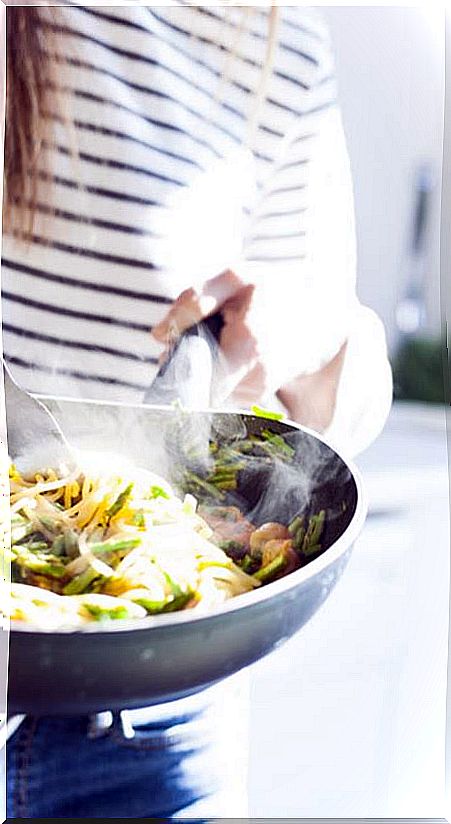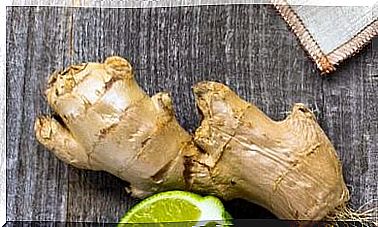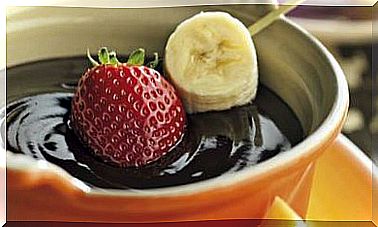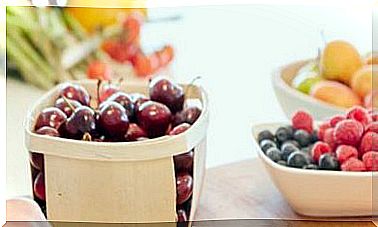How To Make Good Use Of Leftovers (and Not Waste Food)
If we have leftover bread, rice, pasta, vegetables from the broth or coconut milk, we can use them in other preparations to save time and money.

Many times we make too much food or we simply have something left on the plate. You don’t have to throw it away because you can always take advantage of it.
I understand that some leftovers are more lazy, for example when they are pieces of vegetables from a broth or a glob of macaroni that are already cold. Nothing happens, all this can be easily used to mount other dishes.
Not only do you save and avoid throwing food away, you make it easier for yourself to prepare other dishes, spending less time and effort.
How to cook each type of leftover
Here are some of the most “problematic” leftovers and what to do with them to make good use of them.
1. Leftover pasta
Surely one of the things that pulls you back is seeing that the pasta from the previous day becomes sticky and when you try to remove it it breaks. Don’t worry, it can be arranged.
- To avoid this : before the leftover pasta cools, add a little olive oil (with a spray bottle it is easier), stir it very well and let it cool completely. Then store it in a container and in the fridge.
- If your pasta is already made into a block : bring water to boil in a medium saucepan and have a large strainer or slotted spoon handy. When it comes to a strong boil, add the pasta, leave it for a minute and remove it quickly with the strainer or slotted spoon. The paste will have peeled off and heated up. Stir it and use it in whatever dish you want.
- What can I use it for: Any pasta dish, be it a classic with tomato sauce or a salad. Long noodles, spaghetti, and noodles also serve as pasta for a broth or soup (like ramen). Stuffed pastas like tortellini also work for these dishes.
2. Leftover rice
If we have left over cooked rice, it is best to save it for other meals. With rice it can also happen as with pasta: that it becomes attached, it breaks and it no longer seems so appetizing. For this we also have solutions.
- To avoid this : never leave the rice in water once it is done. It will continue to cook and / or absorb water (if you leave it in cold water) while releasing starches into that water, making the resulting mixture a hard and difficult to handle paste.
Drain the rice very well if you have done it with plenty of water, fluff the grains from time to time with a fork and when it is cold transfer it to a container and to the refrigerator.
If you have made the rice with just enough water, it will already be dry. You just have to fluff it with a fork from time to time until it cools and put it away. While the rice is cooling, make sure it is covered so that the surface grains will not dry out.
- To undo the block of rice : instead of blanching it, like pasta, do it in the pan with a few drops of olive oil. Use a large wooden spoon and undo the block of rice while it heats. In a few minutes you will have a loose rice and al dente.
If you are going to use the rice in a stew or a preparation with a lot of broth, you can skip this step. Put the block of rice in the pot with your hot stew and undo it little by little with the slotted spoon, without forcing it. It takes a couple of minutes.
- What can I use it for: Any rice dish, from stir fry to stews and soups. Also for sweets and desserts. For example, if you have rice cooked as is (without salt or oil) you can quickly make a rice pudding for breakfast. Simply boil the vegetable drink with cinnamon and lemon, add the rice and remove when it is creamy (about 4 minutes).
To make breakfast rice porridge, too. You can make it the same as rice pudding and then add a good handful of nuts and some fruits (grapes, pear pieces, mandarin orange, etc).
3. Leftover bread
The bread that you have left over can last 1-2 days more, depending on the type of bread and the temperature and humidity it makes. Always keep it in a paper or cloth bag and preferably in a bread basket or pantry, away from water vapor and the sun.
You can freeze it to use it any other day (remember to protect it well so that it does not suffer cold burns or take on strange flavors) or let it dry completely to make breadcrumbs.
- How to use stale bread : if your bread has already become stale and dry there is no going back, that is, no matter how hot it is, it will not be tender again, but you can use it in other ways: such as croutons and making breadcrumbs.
- What can I use it for : In soups, for example, you can add a few pieces of diced bread if you want some soft bits. If you want them crispy, cook them for a couple of minutes in the pan with olive oil and paprika (it’s optional).
Breadcrumbs are usually very good for us to unite doughs such as meatballs and hamburgers, and for breading croquettes. You can grate the bread with a regular grater for a fine grain, or use the larger holes for a thicker breadcrumb, more like panko or Japanese breadcrumbs. You can also do it by cutting the loaves into pieces and passing them through the mixer.
Store it in a jar with a hermetic seal and incorporate the breadcrumbs that you make, shaking the jar to mix. It is okay to mix different types of breads, quite the opposite, it gives it more flavor.
Always use good quality whole grain breads, with or without seeds, but that are whole. The croutons and breadcrumbs resulting from these breads are much richer, fragrant and crunchier than white bread, so it is worth spending a little more for a better, healthier and more profitable bread.
4. Vegetables in a broth
You have made a very rich vegetable broth, cooking it for a long time, and the idea is to take only the broth. What do we do with those overcooked vegetables?
- Carrots : make a cream of carrots with leek, pumpkin, zucchini, potato … whatever you have on hand. You can also serve them with a couscous, mash them with potato to make a puree, etc. Being very soft they are also good for toasts: spread the carrot with a knife on the bread and put some sesame or flax seeds, a pinch of salt and olive oil.
- Turnips : if you have used turnips, which are not that they have a lot of flavor either, you can mash them together with potato to make a very creamy puree.
- Leeks : they are also used to make creams, as in the case of carrots, or to incorporate them into a vegetable pate. As you have to beat everything together, it doesn’t matter that the leeks are very soft, just make sure they are well drained.
- Celery : dry well, cut into small pieces and use in salads. It also works for vegetable patés.
- Onion : make a homemade ratatouille with the remains of onion and peppers. You will only have to poach them with olive oil, add zucchini and some tomatoes. It will be done faster since the onion and peppers are already tender.
- Pumpkin : it is used for purees and creams in addition to vegetable patés or to eat as is, as an accompaniment to other dishes, or as a creamy base for a risotto.
5. Coconut milk
Surely you have used a part for a dish, you have left over and you do not want it to go bad. In the fridge it lasts about 3 days, so you can think of some ideas to take advantage of it.
If you see that you are not going to do anything with it in that time, freeze it. You can use ice buckets or a tightly closed container (do not freeze it in the can because it does not close perfectly).
What you can use it for:
- For breakfast: one or two tablespoons in coffee, in porridge, in a chia pudding or with some fresh fruits.
- To make sautéed vegetables creamy: you can also take advantage of vegetable leftovers (spinach, carrots, onion, broccoli, peppers, etc.), make a sauté and add a splash of coconut milk before turning off the heat. This will give it a very creamy touch.
- For stews and curries: be it a traditional stew, a stew with potatoes or a curry, you can always add a splash of coconut milk to make it more fragrant and creamy. Try using it in some chickpeas with spinach, it looks great.
- In purees and creams: adding coconut milk makes them creamier. Add it before mixing it all together and you will see the difference.
6. The dried lemon
I think it is a classic in all refrigerators : half a dried lemon that we have left there and have not noticed its presence.
How to avoid it: When you use only half a lemon, think about what to do with the other half. If you want to use it well, peel it with a vegetable peeler and put the skins in a tightly closed bag and freeze them. With this you will have lemon peel for any dish or preparation, be it sweet or salty.
Keep the rest of the lemon in a container and put it in plain sight, not in the bottom of the fridge. It will be easier for you to see and use, for example, to dress a salad or to make hummus.
How to use dried lemon: as it is already dry and hard, there is not much we can do with it, but we can revive it a little for teas and infusions. Wash it and put it in a saucepan with a couple of cups of water. When it comes to a strong boil, lower the heat and let it simmer for 2-3 more minutes. Use that water to make tea or infusions, they will have a good lemon flavor.









